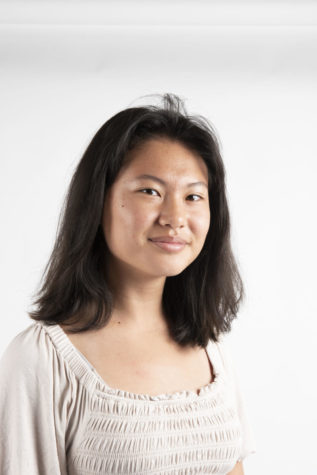Less is more: School days should remain short
Due to online schooling, classes end at 12:35 p.m., which is just enough time to effectively learn.

As COVID-19 monopolizes all aspects of daily life, classrooms are now our own bedrooms and classwork is now technically considered homework. Everyone is still getting up early for school as if we are attending our ordinary campuses, but with a shorter school day. With school ending so soon, it means more homework for students to get done. However, school is better with shorter classes, because students have more time to get homework done than if they were in the ordinary classroom.
Throughout these first four weeks of school, I have been getting more homework in distance learning than I have in the past when in actual classrooms. Even though we are getting more homework, we have a lot more time after school to work on it.
When we were back in the classroom, students had the opportunity to take a break from their technology for a while by looking at whiteboards or notebooks. Now, students are consumed in their screens for hours on end because everything is digital now. Some students can’t sit at a desk and stare at a screen for too long because they get anxious or giddy. Furthermore, according to the MayRecreation Content Team, students can have negative effects on their memory which could cause minor brain damage all because of too much screen time.
While students are growing up, their brain and body needs energy like sleep. Longer classes would result in little time to get homework done meaning less sleep. Students need more sleep than what they get, in fact, according to the nationwide children’s association, students get an average of 7 to 7 ½ hours of sleep each night when they should be getting 9 to 9 ½ hours of sleep. Shorter classes have given students more time to focus on themselves and complete their homework thoroughly without going to bed at 2 a.m. every night.
Additionally, distance learning introduced a new form of communication with teachers. Zoom has become our new classroom, but it also does have its setbacks. We have to stare at a screen for six hours a day or more, which is damaging for the eyes. Even with the 10 or 20 minute breaks between classes, students are still either on their computers, phones or TVs because everything now revolves around technology. Most of the time, I am still either doing homework during my breaks or getting up to go get a snack. If we had longer classes, we would spend even more time on the computer meaning more stress on our eyes and on ourselves.
Longer classes would be okay if we were back at the campus, but for distance learning, students would have no free time off the computer. The time we spend in our classes now is just enough time for us to get all of the learning requirements we need.

Hey, it's Sydney (not Sabrina). This is my fourth year on staff as an Entertainment Editor. If I'm not at school, you can find me at your mom's house.



